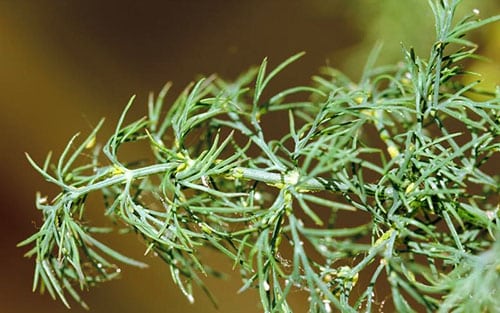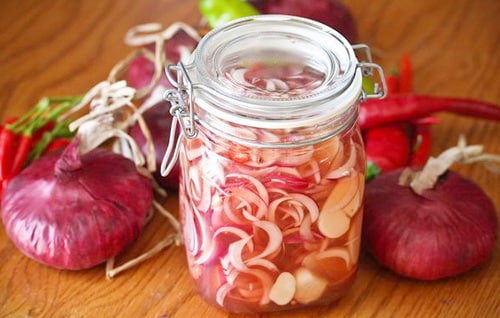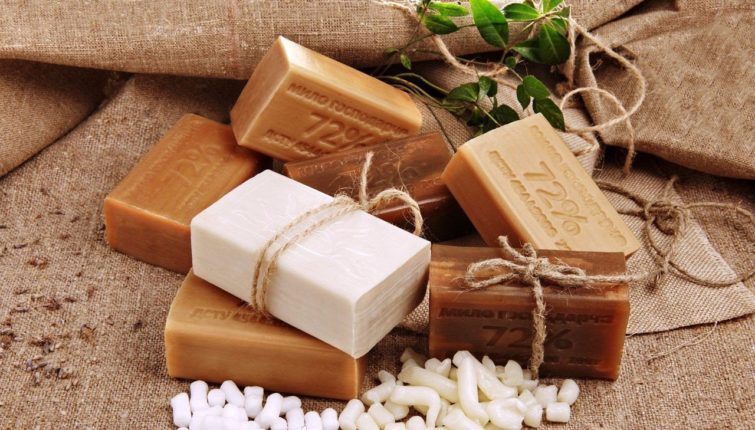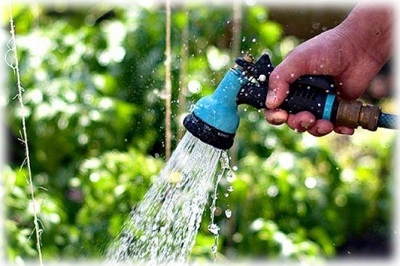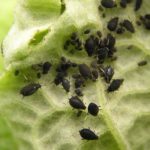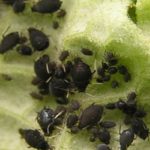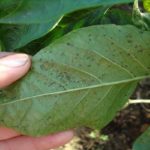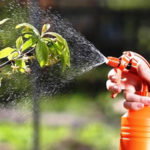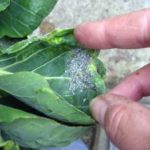Aphids on dill are more common than any other harmful insect. The pest is attracted to the succulent leaves and stems of greenery, the juice of which they feed on. If the crop is not properly cared for, the plantings are quickly affected by aphids and do not have time to grow normally. You need to solve the problem with insects as quickly as possible so as not to be left without fresh herbs in the summer.
- Reasons for the appearance of aphids on dill
- How to determine if there are aphids on dill
- Fighting methods
- Folk remedies for fighting aphids
- Herbal infusions and decoctions
- Soap
- Ash infusion
- Ash solution
- Vinegar
- Ammonia
- Baking soda and salt
- Biological products against aphids
- Chemicals
- Physical methods
- How to get rid of cut dill?
- Preventive measures
Reasons for the appearance of aphids on dill
In most cases, insects are caused by ants.. They spread aphids throughout the area and leave them on succulent plants. Ants not only protect aphids from other insects and feed on their sap, but also bring bugs into their anthills in winter. Therefore, with the onset of spring, aphids appear as if out of thin air.
How to determine if there are aphids on dill
It’s easy to get ahead of the fact that aphids have appeared in the beds with greenery. When there are too many insects, it is visible to the naked eye. It is enough to simply examine the greenery and see a cluster of small green bugs on it. They prefer to spread on agricultural crops in colonies.
The first signs of aphid infestation are yellowing of the leaves and their drying out. Aphids feed on the sap of the stems and gradually they begin to become withered.
After themselves, insects leave secretions on the bushes, which are called span. Pyad has a sweetish taste and honey aroma. In turn, this attracts other harmful parasites and contributes to the development of fungal diseases.
Fighting methods
You can fight aphids using various methods. There are several main methods:
- Chemical.
- Agrotechnical.
- Biological.
- Using traditional methods.
- With the help of modern biological products.
Each control method has its own nuances of application, as well as advantages and disadvantages.
Folk remedies for fighting aphids
Before resorting to aggressive chemical methods of pest control, you need to try safer folk remedies that can be used to treat the plant. They are not harmful to health and are considered one of the safest. But they are not always as effective as herbicides.
Herbal infusions and decoctions
Infusions are safe means of control, but when used in strong concentrations they can cause severe burns.
Recipes:
- Onion. Several heads of garlic are crushed (sometimes onion peels are added) and poured into 1 liter of water. Infuse onion peels for 5 hours. Then add 3 tbsp. l. grated laundry soap and spray the bushes in the evening after watering every other day.
- Tobacco. Pour 200 g of dry tobacco leaves into 5 liters of water and leave in a dark, well-ventilated room for 2 days. Strain before spraying.
- Chamomile. Pour 100 g of dried chamomile inflorescences into 1 liter of water and leave for 12 hours. Before spraying, mix 1 part of the infusion with 3 parts of water and shavings of laundry soap. Spray until the aphids disappear from the area.
Herbal infusions are effective when there are still few aphids in the beds.
Soap
In order to get rid of aphids in dill beds, it is not necessary to resort to sophisticated methods. For example, regular laundry soap is often used. If you don’t have laundry soap at hand, use regular soap that you have in the house.
To obtain a soap solution, you need to take 300 g of solid soap or 150 g of liquid soap. Then dilute it in 10 liters of warm water.
The greens are sprayed in the evening, when the sun's rays are not so bright, until there are no traces of insects left in the beds.
Ash infusion
An effective folk remedy for harmful insects using dill is ash infusion. You don't need to put a lot of effort into preparing it. It is used not only as an insect repellent, but also as a fertilizer, after adding mineral fertilizers.
The ash infusion recipe is easy to prepare.You need to take 3 kg of ash and pour 10 liters of boiling water over it. Infuse for two days. After this, strain through thin gauze, add 45 g of any soap. Mix thoroughly until the soap dissolves. Spray the bushes every evening after sunset.
An infusion based on wood ash helps to cope not only with aphids, but also with other crop pests.
Ash solution
A solution of wood ash, like ash infusion, is often used in agriculture to destroy harmful insects on the site. It is harmless to humans and after its use, toxic substances do not accumulate in plants.
To prepare an ash solution, you need to take 400 g of ash and sift it through a sieve. Then pour boiling water over it. Boil the solution for 30 minutes. After this, strain the solution and dilute with 10 liters of cold water. For better effect, add a small amount of soap.
Spray daily after watering every evening. Spraying is stopped after the aphids disappear from the dill.
Vinegar
The fight against aphids with vinegar is often carried out throughout the summer. Peak insect infestations occur between May and July. During this period, aphids are especially active and spoil the entire green harvest. Treatment of the plant with vinegar is carried out every 2-3 days. The bushes are thoroughly sprayed so that no untreated leaves and stems remain.
Ammonia
1 tbsp. l. Mix ammonia with 1 liter of water. Mix thoroughly and spray the plants 3 times a week in the evening after watering.
Baking soda and salt
10 tbsp. l. Dilute baking soda in 10 liters of water. Use the resulting solution to treat bushes affected by aphids.
Biological products against aphids
Biological products for aphids contain only organic substances that do not have a negative effect on the human body. You can treat plants with biological preparations at any time, and you can eat greens within a week after treatment. The result does not appear immediately, but a few days after spraying. Popular drugs are Fitoverm, Akarin and Entobacterin.
Chemicals
Chemical preparations for aphids act immediately after use, but have a toxic effect on plants and accumulate in the stems. Herbicides help kill insects and prevent their appearance. Among the effective herbicides are Iskara, Tanrek, Aktara.
Physical methods
Physical methods of controlling aphids are considered the safest, but at the same time labor-intensive. These include:
- Washing off insects with a hose.
- Collecting pests by hand.
- A homemade plastic cap is installed on the plants, through which aphids do not penetrate to the dill.
Physical methods of struggle are considered the most ineffective among others.
How to get rid of cut dill?
There is dill that had aphids on it, so long as the leaves are not severely damaged. First, the greens must be rinsed well under running water and, if necessary, done this several times. If there are a lot of aphids on the stems, then it is better to throw out such greens.
Preventive measures
Dill should be regularly inspected for the appearance of aphids and at the first sign of its appearance, action should be taken immediately. Mineral and organic fertilizers need to be applied regularly. When planting crops, be sure to take into account the rules of crop rotation. The place where dill is planted is changed annually. You can replant greens in the same bed after 2–3 years.

